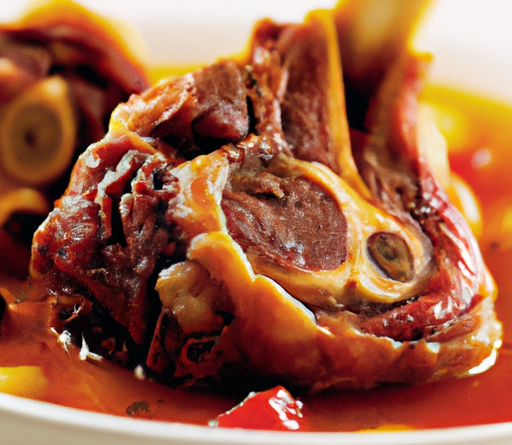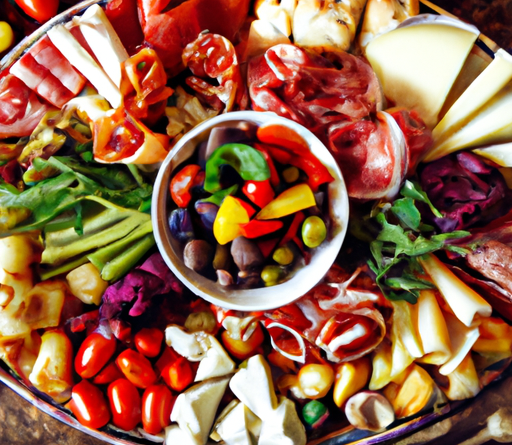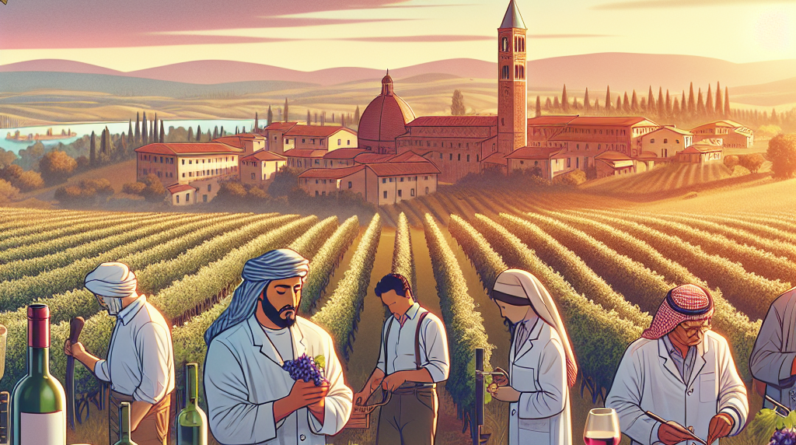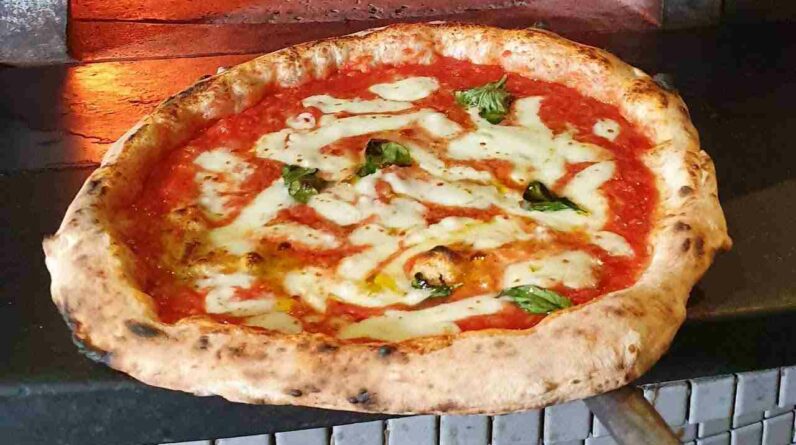Discover the significance of “cucina casalinga” or home cooking in Italian households. We delve into the art of traditional Italian cuisine and its deep-rooted connection to family, culture, and history. Experience the aromas and flavors that have been passed down through generations, and learn how this cherished culinary practice continues to strengthen bonds and nourish both body and soul. Join us as we explore the heartwarming tales and mouthwatering dishes that make home cooking an essential part of Italian life.
The Historical Roots of Cucina Casalinga
Evolution of Italian Home Cooking
Italian home cooking, or “cucina casalinga,” has deep historical roots that date back centuries. It has evolved as a result of various influences and cultural exchanges, making it a unique and cherished culinary tradition. From the simplicity of peasant dishes to the sophistication of royal feasts, Italian home cooking has been shaped by both humble and opulent traditions.
Traditional Ingredients and Recipes
Cucina casalinga places great emphasis on using fresh, high-quality ingredients that are readily available. From ripe tomatoes to luscious olive oil, the richness of Italian cuisine lies in its dedication to preserving the integrity of each ingredient. Traditional recipes, such as homemade pasta sauces, risottos, and slow-cooked stews, are handed down through generations, ensuring the preservation of these culinary treasures.
Significance of Food Culture in Italian Society
In Italian society, food is not merely sustenance; it is a way of life, a cultural expression, and a symbol of togetherness. Italians take pride in their gastronomic heritage, and the art of cooking is deeply ingrained in their cultural fabric. It serves as a means of celebrating important occasions, fostering social connections, and nurturing familial bonds. Cucina casalinga exemplifies the importance of food culture in Italian society, representing a way to connect with one’s roots and uphold cherished traditions.
Health Benefits of Cucina Casalinga
Nutritional Value of Home-Cooked Meals
Cucina casalinga offers numerous health benefits, starting with the nutritional value of home-cooked meals. By using fresh ingredients, home cooks can ensure that their dishes are packed with essential nutrients like vitamins, minerals, and antioxidants. Moreover, the absence of preservatives and additives commonly found in processed foods allows for healthier and more wholesome meals.
Control over Ingredients and Portion Sizes
Preparing meals at home gives individuals full control over the ingredients used, allowing them to cater to their specific dietary needs and preferences. Whether it’s accommodating food allergies, following a specific diet plan, or simply avoiding unnecessary additives, cucina casalinga provides the flexibility to create personalized, nourishing meals. Additionally, controlling portion sizes can help individuals maintain a healthy weight and prevent overeating.
Promotion of Family Bonding through Meal Preparation
One of the most significant benefits of cucina casalinga is its role in fostering family bonding. Cooking together allows family members to spend quality time in the kitchen, sharing stories, laughter, and knowledge. From grandparents passing down treasured recipes to children learning valuable cooking skills, the shared experience of preparing meals strengthens familial relationships and creates lasting memories.
Preservation of Culinary Traditions
Passing Down Family Recipes
Cucina casalinga serves as a vessel for preserving and passing down family recipes from one generation to another. These recipes often carry with them stories and memories, connecting individuals to their ancestral roots. It is through the act of recreating these dishes that traditions are kept alive, ensuring the continuity of culinary heritage.
Regional Specialties and Diversity
Italy’s diverse regional cuisines are a testament to the richness and diversity of Italian home cooking. Each region boasts its own unique specialties, ingredients, and cooking techniques. From the rich pasta dishes of Emilia-Romagna to the fresh seafood of Liguria, cucina casalinga celebrates the multitude of flavors and culinary traditions found within Italy.
Continuation of Generational Cooking Techniques
Cucina casalinga not only presents an opportunity to preserve recipes but also allows for the continuation of generational cooking techniques. It is through learning from older family members that younger generations can acquire invaluable skills, such as pasta-making or sauce simmering techniques, that have been refined and perfected over time. This transmission of knowledge ensures the preservation of traditional cooking techniques and the authenticity of Italian home cooking.
Economic and Social Impacts
Supporting Local Farmers and Food Producers
Cucina casalinga plays a crucial role in supporting local farmers and food producers. By prioritizing fresh, local ingredients, home cooks contribute to the sustainability of local agriculture and help preserve traditional farming practices. This support not only benefits the local economy but also ensures the availability of high-quality ingredients for future generations.
Food as a Catalyst for Social Gatherings
Italian culture places immense importance on social gatherings, and food acts as a catalyst for bringing people together. Cucina casalinga encourages communal meals and shared experiences, promoting stronger social connections among family members, friends, and neighbors. The act of preparing and sharing food creates a warm and welcoming atmosphere, fostering a sense of belonging and community.
Cultural Expressions of Identity through Food
Cucina casalinga serves as a cultural expression of identity for Italians both within Italy and abroad. The distinct flavors and techniques used in Italian home cooking reflect the country’s diverse regional identities, allowing individuals to proudly showcase their heritage through the dishes they create. It also serves as a means of introducing and promoting Italian culture to the broader international community.
The Mediterranean Diet
Traditional Mediterranean Eating Patterns
Cucina casalinga aligns closely with the principles of the Mediterranean diet, which has gained global recognition for its health benefits. Emphasizing fruits, vegetables, whole grains, legumes, and lean proteins, the Mediterranean diet emphasizes the importance of balance and moderation in food choices. It also advocates for the consumption of heart-healthy fats, such as olive oil, and discourages the excessive use of processed foods and added sugars.
Reduced Risks of Chronic Diseases
Numerous studies have shown the positive impact of the Mediterranean diet on reducing the risk of chronic diseases. By incorporating a variety of nutrient-dense foods and minimizing processed options, cucina casalinga supports heart health, reduces the likelihood of developing diabetes, and promotes overall longevity. The abundance of fresh produce, lean proteins, and healthy fats contributes to lower rates of obesity, high blood pressure, and inflammation.
Recognition by UNESCO as Intangible Cultural Heritage
In 2010, the Mediterranean diet was recognized by UNESCO as an intangible cultural heritage. This designation affirmed the significance of the diet as a cultural practice that promotes sustainability, nutritional well-being, and community solidarity. The recognition serves as a testament to the value of cucina casalinga not only within Italian society but also on a global scale.
Educational Values of Cucina Casalinga
Teaching Life Skills and Responsibility
Cucina casalinga offers a unique opportunity to teach essential life skills and cultivate a sense of responsibility in individuals of all ages. Whether it’s learning to chop vegetables, follow a recipe, or plan and execute a meal, cooking at home instills valuable habits and self-sufficiency. These skills go beyond the kitchen and can be applied to other areas of life, such as time management, organization, and problem-solving.
Developing Culinary Knowledge
Engaging in cucina casalinga allows individuals to develop their culinary knowledge and expand their repertoire of dishes. Experimenting with different ingredients and techniques encourages creativity and a deeper appreciation for the art of cooking. It also provides a platform for individuals to explore new flavors, cultures, and culinary traditions, expanding their culinary horizons.
Fostering Creativity and Adaptability in the Kitchen
Cooking at home fosters creativity and adaptability in the kitchen. Without the constraints of a fixed menu or limited options, home cooks have the opportunity to experiment, improvise, and adapt recipes to suit their taste preferences and ingredient availability. This creativity enhances the overall cooking experience, empowering individuals to think critically and problem-solve, while also encouraging a sense of culinary exploration.
Eating Well on a Budget
Affordability of Home-Cooked Meals
Cucina casalinga offers an economical alternative to eating out or relying on pre-packaged convenience foods. By cooking at home, individuals can save money by purchasing ingredients in bulk and preparing meals in larger quantities. Additionally, utilizing inexpensive pantry staples, such as lentils, beans, and grains, allows for nutritious meals that are both cost-effective and satisfying.
Making the Most of Seasonal Produce
Incorporating seasonal produce into home-cooked meals is a hallmark of cucina casalinga. By embracing seasonal ingredients, individuals can enjoy the peak flavors and nutritional benefits of fresh produce while minimizing costs. Farmers’ markets and local produce stands are excellent sources for finding affordable, locally sourced fruits and vegetables, enriching both the flavors and affordability of home-cooked meals.
Minimizing Food Waste and Costs
Cucina casalinga promotes responsible resource management by minimizing food waste and reducing costs. By planning meals in advance and utilizing leftovers creatively, home cooks can optimize ingredient usage and reduce unnecessary waste. This approach not only reduces grocery expenses but also contributes to sustainable living practices, benefiting both the environment and the household budget.
Emotional Nourishment and Well-being
Comfort and Emotional Connection to Food
Cucina casalinga provides emotional nourishment through the comfort and connection it fosters with food. Many traditional Italian dishes evoke a sense of nostalgia, reminding individuals of cherished memories and the warmth of home. The act of cooking and enjoying a home-cooked meal can provide solace, bring joy, and serve as a form of self-expression, promoting emotional well-being and a sense of fulfillment.
Holistic Approach to Health and Happiness
The emphasis on whole, fresh ingredients and balanced meals in cucina casalinga aligns with a holistic approach to health and happiness. By nurturing the body through nutritious meals, individuals can support their physical well-being. Simultaneously, the communal aspect of cooking and sharing meals nurtures social connections and promotes emotional well-being. Cucina casalinga recognizes the interconnectedness of mind, body, and spirit, promoting a holistic approach to overall well-being.
Rediscovering Simplicity and Mindful Eating
In today’s fast-paced world, cucina casalinga offers a valuable opportunity to rediscover simplicity and practice mindful eating. By focusing on the preparation and enjoyment of meals, individuals can become more conscious of their dietary choices and eating habits. This mindful approach encourages savoring each bite, cultivating gratitude for the food on one’s plate, and promoting a healthier relationship with food.
Cucina Casalinga as a Cultural Heritage
Preserving Italian Culinary Traditions
Cucina casalinga plays a vital role in preserving and promoting Italian culinary traditions. As a cultural heritage, it represents the collective knowledge, skills, and practices of countless generations. By celebrating and preserving cucina casalinga, individuals contribute to the safeguarding of Italian culinary traditions for future generations to enjoy and appreciate.
Link to Historical and Artistic Heritage
Italian home cooking also possesses a strong link to Italy’s historical and artistic heritage. Many traditional dishes have roots in ancient culinary practices and are deeply intertwined with historical events and cultural movements. Furthermore, the presentation and aesthetics of Italian dishes often echo Italy’s rich artistic heritage, with meticulous attention to detail and a focus on harmonious flavors and colors.
Promoting Italian Cuisine Worldwide
Cucina casalinga has become synonymous with Italian cuisine worldwide, generating a significant impact on the global culinary landscape. Italian restaurants and cooking schools abroad often seek to recreate the authentic flavors and techniques of cucina casalinga, promoting Italian gastronomy and cultural traditions. This worldwide appreciation for Italian home cooking further reinforces its status as a cultural heritage and contributes to Italy’s reputation as a culinary powerhouse.
Challenges and Changing Dynamics
Impact of Modern Lifestyles on Cucina Casalinga
As lifestyles become increasingly fast-paced and demanding, the practice of cucina casalinga faces several challenges. The time and effort required for meal preparation may be seen as burdensome, leading individuals to prioritize convenience over homemade meals. Balancing work and family responsibilities may limit the time available for cooking, potentially undermining the practice of cucina casalinga.
Role of Convenience Foods and Fast-paced Culture
The rise of convenience foods and the prevalence of fast-paced culture have also impacted the practice of cucina casalinga. Pre-packaged meals, take-out options, and ready-to-eat products offer quick solutions in today’s busy world. While these options provide convenience, they often lack the freshness, nutritional value, and cultural significance associated with cucina casalinga.
Efforts to Preserve and Promote Home Cooking
Despite these challenges, there is a growing movement to preserve and promote the practice of cucina casalinga. Cooking classes, food-focused social media communities, and cultural organizations aim to reconnect individuals with the joys of home cooking. By highlighting the benefits of homemade meals, advocating for improved accessibility to fresh ingredients, and emphasizing the cultural and emotional significance of cucina casalinga, these efforts contribute to its continued practice and appreciation.
In conclusion, cucina casalinga holds immense importance within Italian households and society at large. Its deep historical roots, health benefits, preservation of culinary traditions, economic and social impacts, association with the Mediterranean diet, educational values, affordability, emotional nourishment, and status as a cultural heritage contribute to its enduring significance. While challenges and changing dynamics may pose obstacles, efforts to preserve and promote home cooking play a vital role in the continuation of cucina casalinga. By embracing this culinary tradition, individuals can not only experience the joys of preparing and sharing meals but also connect with their cultural heritage and promote the richness of Italian cuisine worldwide.










